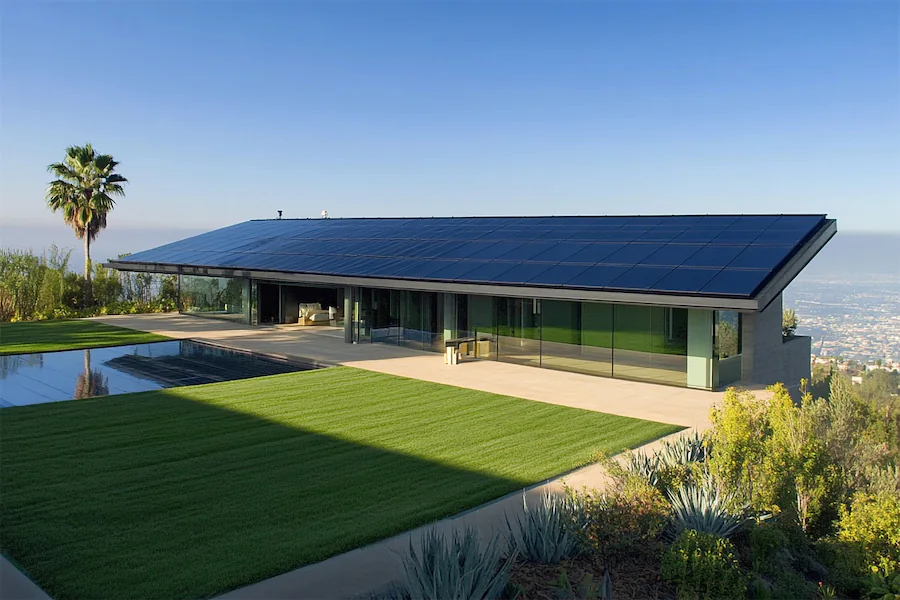A solar roof integrates photovoltaic (PV) technology directly into roofing materials, enabling the roof to generate electricity from sunlight while serving as a protective barrier for the building. This dual functionality offers a seamless and aesthetically pleasing alternative to traditional rooftop solar panels.
History and Origins of Solar Roofs
The concept of integrating solar energy generation into building materials emerged in the late 20th century, evolving from traditional solar panels mounted on rooftops to building-integrated photovoltaics (BIPV). Advancements in PV technology and materials science have facilitated the development of solar shingles and tiles that blend with conventional roofing materials, providing both energy generation and weather protection.
Key Features of Solar Roofs
- Aesthetic Integration: Solar roofs are designed to resemble traditional roofing materials, such as asphalt shingles or clay tiles, maintaining the architectural integrity of the building. This design appeals to homeowners seeking a less obtrusive solar energy solution.
- Durability: Solar roofing materials are engineered to withstand various weather conditions, including high winds, hail, and heavy snow. For instance, Tesla’s Solar Roof tiles are made from tempered glass and steel, offering high durability and corrosion resistance.
- Energy Efficiency: While solar roofs provide renewable energy, their efficiency can vary. Traditional solar panels often have higher efficiency rates due to optimal angling and ventilation, whereas solar shingles are fixed and may have lower efficiency. However, ongoing advancements are improving the performance of solar roofing systems.
Applications of Solar Roofs
Solar roofs are suitable for residential and commercial buildings, especially when:
- Roof Replacement is Imminent: Installing a solar roof during a scheduled roof replacement can be cost-effective, combining roofing and solar installation expenses.
- Aesthetic Considerations are Paramount: For properties where the visual impact of traditional solar panels is a concern, solar roofs offer a more integrated and appealing solution.
- Space Constraints Exist: In cases where roof space is limited or unsuitable for standard solar panels, solar shingles can maximize energy production without additional structures.
Considerations When Choosing Solar Roofs
- Cost: Solar roofs generally have a higher upfront cost compared to traditional roofing combined with standard solar panels. The total expense depends on factors like roof size, complexity, and the specific product chosen. For example, Tesla’s Solar Roof can cost between $40,000 to $70,000, depending on the roof’s complexity and size.
- Installation Expertise: Proper installation requires professionals trained in both roofing and solar technology. It’s crucial to select certified installers to ensure system performance and longevity.
- Energy Needs and Roof Suitability: Assessing the building’s energy consumption and the roof’s orientation, pitch, and shading is essential to determine if a solar roof will meet energy production goals.
Conclusion
Solar roofs represent an innovative fusion of renewable energy generation and building materials, offering a harmonious blend of functionality and aesthetics. While the initial investment is substantial, the long-term benefits of energy savings and environmental impact make solar roofs a compelling option for forward-thinking property owners.
